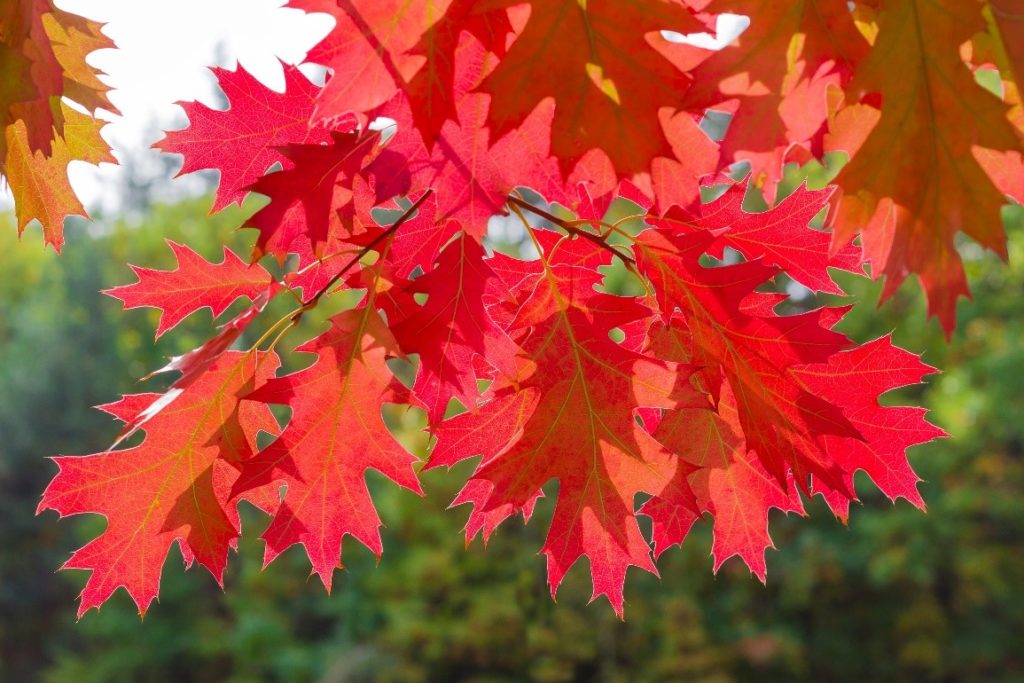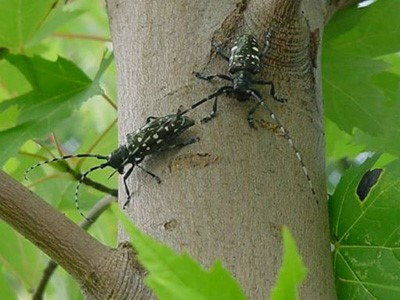November 10, 2020
DEP : It’s 2013, New Jersey Vanquishes Tree-Killing Beetle After Years-Long Battle
“I think that I shall never see
A poem as lovely as a tree …”
The opening lines of this ode to trees were, of course, written by a New Jerseyan. Poet Joyce Kilmer, a New Brunswick native, penned “Trees,” which continues:

A tree whose hungry mouth is prest
Against the earth’s sweet flowing breast;
A tree that looks at God all day,
And lifts her leafy arms to pray;
A tree that may in Summer wear
A nest of robins in her hair;
Upon whose bosom snow has lain;
Who intimately lives with rain.
Poems are made by fools like me,
But only God can make a tree.
The lyric poem was published in 1914. Like much of his work, “Trees” was influenced by Kilmer’s strong religious faith and dedication to the natural beauty of the world, according to poetryfoundation.org.
“ ‘Trees’ is unique for its personification of the tree in the poem,” according to the website. It would become most popular after Kilmer’s death – in the 1940s and ’50s.
Kilmer, whose given first name was Alfred, graduated from Rutgers College and Columbia University. He served as literary editor for a religious newspaper, The Churchman, and later worked at the New York Times.
He enlisted in the New York National Guard in 1917, as the United States entered World War I. At the time of his deployment, he was widely regarded as the leading Catholic American poet of his generation, according to poetryfoundation.org.
Kilmer was 31 years old when he was killed on a French battlefield in July 1918. He would be awarded the prestigious Croix de Guerre (the War Cross) for his bravery by France. In 1938, the federal government purchased 3,800 acres of old-growth forest in North Carolina that was slated to fall to logging. The swath of forest was named after Kilmer and dedicated to his memory and service.
Kilmer certainly was on to something when he wrote about trees. Did you know …
- New Jersey is 42 percent forested.
- Forests are the greatest land use in New Jersey.
- The northern red oak, Quercus rubra, is the state tree.
- New Jersey has one of the most vivid displays of fall foliage, rivaling those of forests elsewhere in the world; peak season starts in early October.
- The flowering dogwood, Cornus florida, is the state memorial tree.
However, there was a period when Garden State trees came under attack.
And now, a look at 2013 …
In 2013, New Jersey declared victory in a decade-long fight against the Asian long-horned beetle.

The tiny, black-and-white speckled wood borer first appeared in 1996 in New York City, where it was likely transported across the ocean from its native range in Asia via wood-packing material such as pallets or crates.
The invasive beetle was found in New Jersey for the first time in 2002, appearing initially in Jersey City, where 113 infested trees were discovered. Before long, the beetles were turning up in nearby Carteret, Woodbridge, Linden and Rahway. Maple trees – which comprise more than 30 percent of the street tree population in New Jersey – were the beetle’s preferred hosts, but willows, poplars, ash, horse chestnuts and buckeye trees also were in danger.
To control the spreading threat, state agricultural and environmental officials instituted a 25-square-mile quarantine zone across the four infected communities, engaged in public education campaigns and inspected more than 129,600 trees. In total, 21,981 trees had to be removed, chipped and burned.
The sustained effort by federal, state and local officials paid off. The last ALB infestation in New Jersey occurred in 2006, though several more years of “confirmation cycles” were required before the invasive insect could be considered safely eradicated. New Jersey was the second state to declare successful eradication, after Illinois, in 2008.
By 2013, the New Jersey Forest Service had replanted about a third of the trees that were removed, selecting species not favored by the beetle.
“While this eradication is a victory for forest health, many other pests still actively threaten New Jersey’s trees,” said then-State Forester Lynn Fleming at the 2013 announcement ceremony and tree planting in Linden, which was severely impacted by the infestation. “We need every resident to keep vigilant and not move firewood, and inspect their trees regularly for signs of infestation.”
Also in 2013 …
Richard J. Sullivan, the DEP’s first Commissioner, died on Dec. 10.
Sullivan, who was appointed to the post in 1970 by then-Gov. William T. Cahill, served until 1974. He guided the DEP as New Jersey became the third state to consolidate all of its environmental programs under one agency.
His work helped to establish Liberty State Park in Jersey City. A 36-acre natural area at the park, known as the Richard J. Sullivan Natural Area, which protects tidal wetlands in the Hudson River Estuary, was dedicated in Sullivan’s honor in 2005.
Sullivan also is considered one of the architects of the Pinelands Commission, created in the late 1970s to protect the million-acre region that spans most of South Jersey. He served as the commission’s chairman for 10 years. The Richard J. Sullivan Center for Environmental Policy & Education, located at the Commission’s headquarters in New Lisbon, is named in his honor.
###
 OFFICIAL SITE OF THE STATE OF NEW JERSEY
OFFICIAL SITE OF THE STATE OF NEW JERSEY